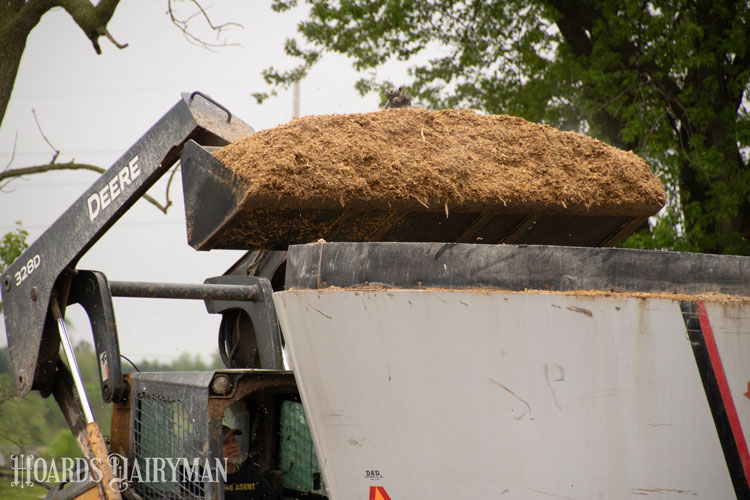Goeser is the director of nutritional research and innovation with Rock River Lab Inc., Watertown, Wis., and an adjunct assistant professor in the dairy science department at the University of Wisconsin-Madison.

Looking back 25 years, I was at a crossroads in my vision for what secondary education to pursue. At 17 years old, I’d developed curiosity in dairy farming and cropping, but I also enjoyed fixing things.

We don’t need to get into my academic pedigree, but the critical thinking approach I learned through automotive and engine repair troubleshooting directly applies to dairy production troubleshooting.
Multiple factors contribute
Over the past month, I’ve supported a couple of nutritionists following substantial milk production losses with dairies they advise. This is an unfortunate reality in our business. In these cases, something dramatic happens and dairy herd performance tumbles by 5, 10 or even 15 pounds per cow per day. The economic challenges mount quickly, and my heart goes out to the producers as I’m folded in to help troubleshoot and find the cause.
While we tend to seek out the straw that broke the camel’s back, there are usually multiple factors that contribute to a herd reaching a break point. Thinking along these lines, we can work through the critical thinking process to logically sort out contributing factors and solve the production challenges. Let’s think like a mechanic does when he or she troubleshoots a broken down truck, starting with the dairy herds’ engine, the rumen.
Fuel for production
The first two items to check when servicing an engine that won’t start are the fuel supply and the spark. The fuel supply to your dairy herd’s ration is the fiber, starch, and sugar in the diet. These energy rich nutrients provide the calories to drive the rumen and performance, and we need to confirm that these nutrients are showing up in the feedbunk at the expected levels.
Total mixed ration (TMR) sampling is a great spot to start so we can confirm the fuel supply isn’t broken. When sampling the TMR, make sure to collect two or three samples in a day or over a week. Research and experience has highlighted that a single TMR sample needs to be interpreted with great caution due to on-farm sampling variance. However, if we have several samples showing that the ration in front of the cows is substantially different from the formula, now we have justification to act.
Note that substantially different should be defined as at least 1 unit different from expected in crude protein, or 2 or more units different in starch or fiber. For example, if the measured starch content (% dry matter or DM) is 24 and the expected is 28, this constitutes a 4 unit difference, and we need to determine why.
The answer likely lies in nutrient changes in the feeds, dry matter changes in the feeds, feeder errors, or mixer equipment issues. Understand there are likely opportunities in two or even three of these areas.
Find the spark
The next step after evaluating the ration’s fuel supply is to check for a spark. The spark in your herd’s ration is provided by starch and sugar. Annually, when getting into new crop silage, we’re reminded how important the quick-hitting energy in the diet is. I often compare rapid-digesting starch and sugar to the spark in an engine to highlight that the nutrient digestion and metabolism cascade starts with and is dependent upon starch and sugar.
Thinking back to graduate school, I learned about bacteria cross-feeding in the rumen. In practical terms, this means that energy and substrate from starch or sugar digesting bacteria and microbes provide food or microbial protein for other bacteria or digestion processes.
This all hinges upon starch and sugar quickly digesting and sparking the rumen. If the quickly digesting nutrients are slower than expected, then fiber digestion and protein metabolism or microbial protein yield suffer. Cows may overeat to meet energy demands or production simply drops off. In both cases, feed conversion efficiency lags and economics tumble.
Test for fecal starch and rumen starch digestibility of the TMR to check for a spark. University of Illinois’ Mike Hutjens taught our industry about the value of fecal starch measures, and I continue to echo his teachings. The goal with fecal starch is to be lower than 1 unit of starch in your high cow manure. This equates to more than 99% total tract starch digestibility and signifies the grain in the diet is highly digestible.
If your herd is missing a spark, consider adding more sugar or a highly digestible starch source such as corn starch or corn grain ground to less than 300 micron. TMR starch digestibility depends upon the silage or grain crop year and the growing conditions’ impact on grain hardness and test weight, kernel processing score or grain particle size, fermentation extent, and seed genetics.
Keep it clean
The last common area to check for in troubleshooting is more difficult to convey. Think of this last area as akin to ensuring the engine is connected to the drivetrain. Feed hygiene or cleanliness issues or other disconnects in the diet can act like a broken u-joint in the drivetrain of a truck and create a disconnect between the diet potential and realized production. Mycotoxins, spoilage, yeast or mold, undesirable bacterial growth, biogenic amines, or undesirable fermentation compounds such as ethyl-lactate or ethyl-acetate are examples in this last area. Consult with advisers to get into this area in much depth, just like you consult with a skilled technician when mechanical repairs outpace your comfort.
I hope that your herd performance continues without issue. Yet, when the inevitable challenges come about, think more like a mechanic to logically troubleshoot the causative factors.











